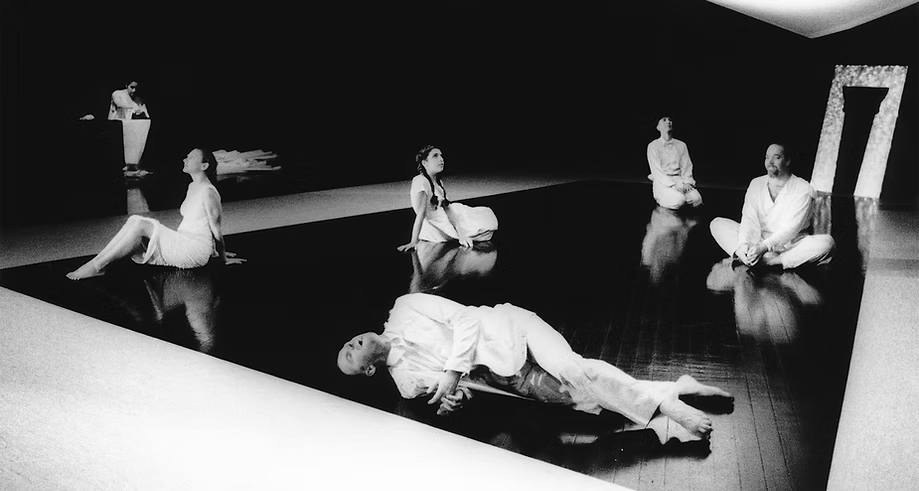
Images held in the Entr’acte Archives
As a director, Elisabeth sought to empower the actor as a primary creator and prioritise a non-hierarchical structure responsive to the collaborative process. The “individuality” of each actor makes the moments of dramatic chorus work dynamic. Group choreography always depicts humanity, whether moving as one as in Gregorian Chant, moving in harmony as in SATB (soprano, alto, tenor, bass) parts, or in the stillness of a living immobility (tableaux).
The artistic directors ensured the continuity of corporeal theatre in Entr’acte’s work. By the late 1980s, this art form distinguished Entr’acte’s oeuvre from the growing number of physical theatre companies often exploring an identity beyond their formation in dance, drama or circus. In Entr’acte, corporeal theatre as actor formation did not so much cross genres as evolve into a uniquely Australian variant of the art form, enriched by other physical and vocal training. Public and professional classes enabled participants to experience corporeal ‘possibility’. Participants could consider how their body, perhaps taken for granted, could be a vehicle for big ideas. This training that underpinned creative research in the company also provided an economic stream: it paid for the studio space where the creatives rehearsed.
Influence of directing on Embodied Thinking
In the final chapter, Elisabeth is the anchor for an arts television program in Sydney. The three French protagonists are before a live and online audience. The event is occurring in the present time, like a performance. Age differences and years have flattened out or simply arrived at this moment. The three are asked how they thought about art and survival under the Pétain regime in Paris – a time when the body they had envisaged worthy of poetic expression became politicised. Some bodies were depicted as eternally youthful (e.g. some Leni Riefenstahl photos). Others, deemed worthless, were trashed and massacred. In her professional theatre life, Elisabeth focused on the poetics of performance. As a mature artist and writer, she dares to address a darker side.
Possessed/Dispossessed (1990-92)
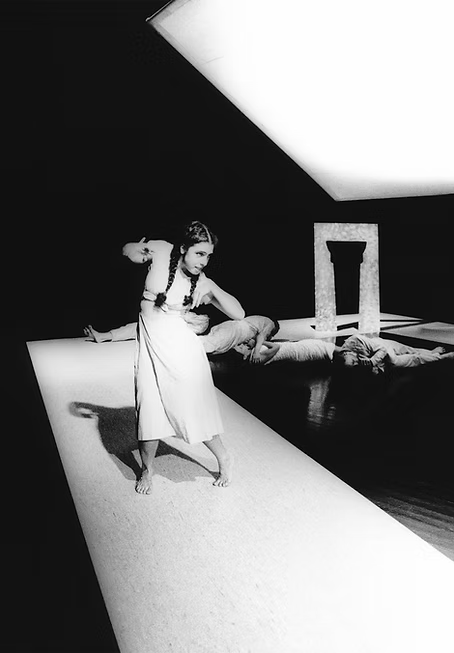
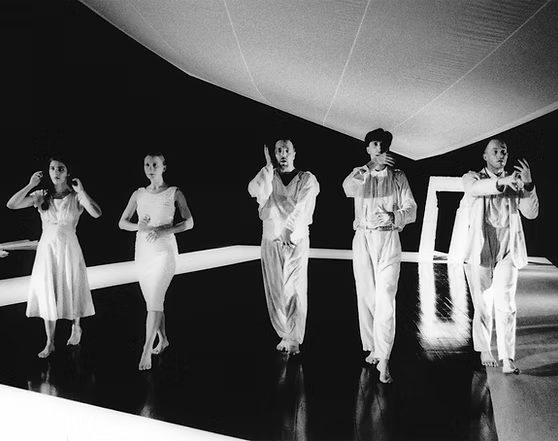
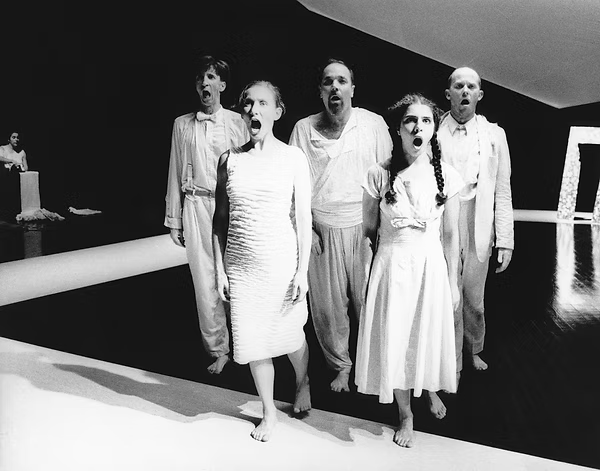
Photographer: Corrie Ancone
Images held in the Entr’acte Archives
Tracey Grimson, 3D World, Oct.19,1992
Entr’acte has established itself as one of the most respected collectives of actors, writers, composers, directors, dancers and professional artists, not just in Australia but on an international scale.
ICON,Oct.13,1992
Entr’acte theatre are (sic) one of the most fascinating dramatic groups at work in Australia. From the time of their conception, they have developed an impressive reputation both locally and overseas as masters of corporeal theatre… Entr’acte Theatre has long been associated with daring explorations on stage. While they are primarily Decroux based, the willingness to take intuitive leaps in developing movement and performance has pushed them beyond the teachings of the late 70s. A number of cultural exchanges with Indonesia has (sic) also influenced the Entr’acte theatre significantly, so that they now incorporate mask, costumes and most importantly new forms of movement into their performance… (P/D) is a powerful piece, dynamic and contradictory, at one moment still, in the next fiery and chaotic. It contends with all the emotions in a manner that is potently instinctual, shared partly with the mind, but felt wholly in the belly… (P/D) is a paradox amalgamated, a meeting of the opposite strands of humanity within us all, striving for balance within extremes.
Jill Sykes, The Sydney Morning Herald, Feb.2, 1991
Entr’acte has created a rich mix of ideas, images, soundscapes, words and movement in its exploration of the two concepts which form the show’s title…..from power and freedom to love and evil…..this is no simplistic enactment of basic definitions but a multi-layered, metaphysical distillation of thoughts and actions
Eclipse (1995)
“Entr’acte…were exploring hybrid art forms before it was fashionable.”
Paul McGillick, The Financial Review, Aug 25, 1995
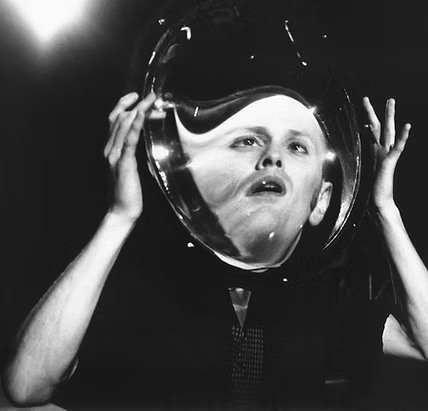
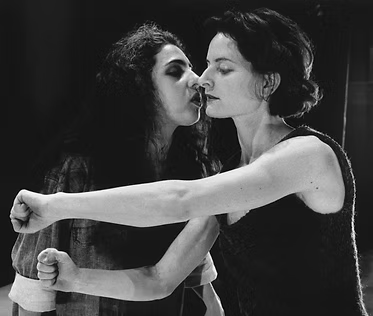
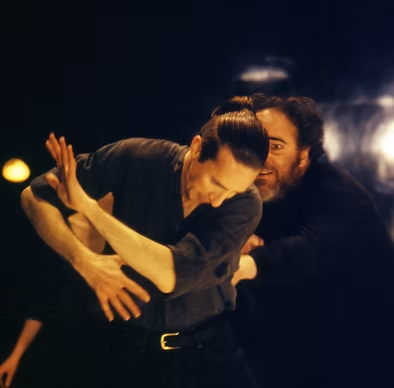
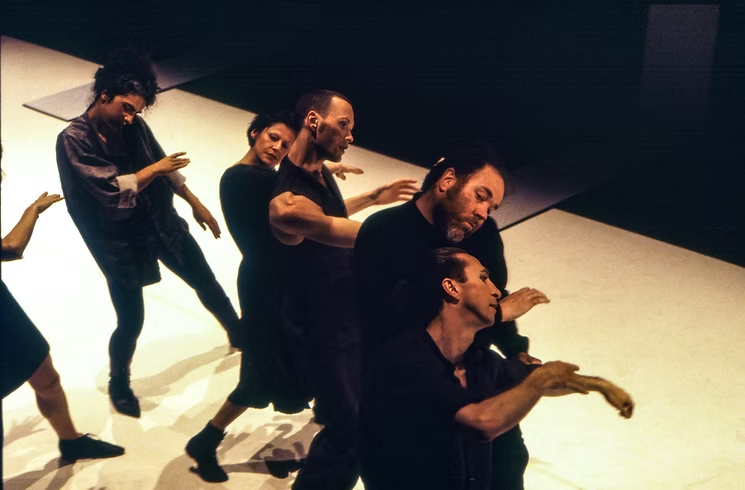
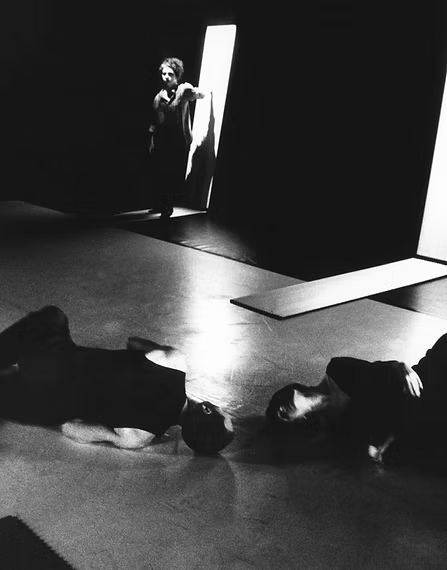
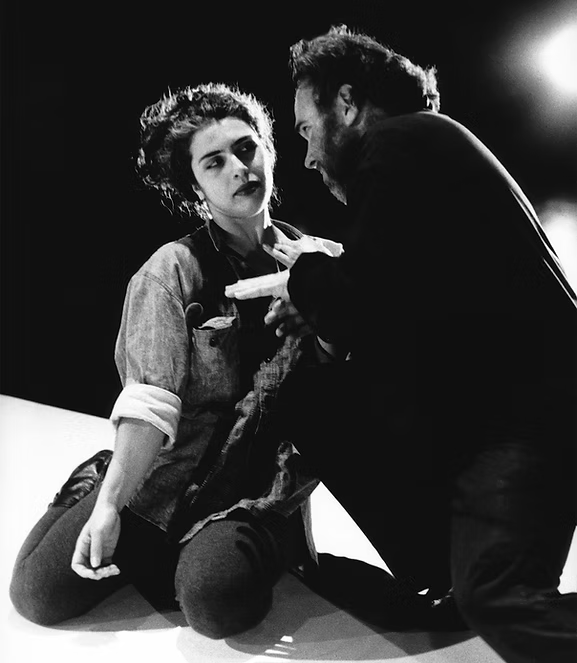
Photographer: Bob Seary
Images held in the Entr’acte Archives
Michael Walsh, Blitz (UNSW)
Eclipse explores a geography of the human body through the journey traced by a terminal illness… While no sustained dialogue or conversation ever takes place, a distinctive narrative emerges through lyric fragments of spoken prose and fragmentary monologue. The persona, afflicted by a serious illness, wavers between remorse, despair, and acute understanding; her ordeal forming a brilliant focus which throws her relationship in relief…the audience becomes aware that they are not watching a morbid passive study in decay, but rather the vivid and engaging perception of one approaching the ultimate uncertainty of death…The precise union of movement and visuals is only sharpened by the polyphony of haunting music with its fragments of percussion, sound samples and speech.
Zoja Bojic, “Zivot je san (Life is a dream)”, Novosti, Aug.21,1995
Finally I have felt a feeling which innumerable theatre events are trying to create but fail. This is the first performance which actually does present something exceptional and which is, at the same time, a representative of the Australian spirit….If this story had been told in any other language than the one it was, it may have been equally poetic and equally witty, but never as understandable a story. This way, by a perfectly precise dosage of ingredients in the melange, – the movement, the sound, words, light… -a big part of the story we perceive not by reason but exclusively through impression and intuition.
Ilma Ruocco, “Bodies in light and the multimedia medium”, La Fiamma, Aug. 31, 1995
Eclipse interweaves narrative threads with images of light and shadow, belonging and exile. It explores the body in space and the flesh as landscape – mapping a sense of belonging through the journey of an illness.
Each of the elements is successful in itself. Together though, the pallid lighting, the simple costumes, the music including the a cappella vocals, the mainly monologue delivery, the restrained choreography, the scenography focusing on the use of the one voice or a solitary figure on the stage, combine to give the production a stark beauty.
This is impressionistic theatre that makes demands on the spectator. However the directing is carefully studied so that the spectator does not go into overload trying to take everything in at once…each spectator is kept interested and excited by what is going on. The balance achieved is very artful….
Jill Sykes, The Sydney Morning Herald, Aug.21,1995
Paul Charlier’s atmospheric music and soundscape, and the contrastingly poetic text by dramaturg Elio Gatti, are dominated by the presence of the six live performers. Their stylised movement is earthy, individual and evocative. They come in all shapes, sizes and personalities… Each has his or her own way of moving and has obviously been encouraged to maintain that individuality while working in a cohesive ensemble….”
Stage Whispers, Performing Arts Magazine, Vol.4,No.8, Sept.1995
The regular theatre patron is offered a fresh experience, a spectacular blending of theatrical forms that leaves audiences filled with wonder and delight as they recognise the unexpected and applaud the intellectual and emotional richness of the performance.
The Return (City Moon, 1994)
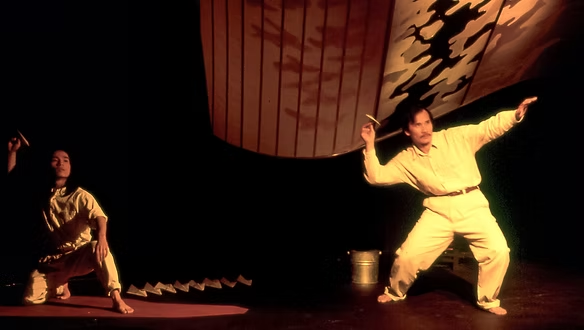

Photographer: Pierre Thibaudeau
Images held in the Entr’acte Archives
Angela Bennie, “Pearl opens Asian season” Sydney Morning Herald, Sept. 9, 1994.
Eli(s)abeth Burke’s direction is unobtrusive and supportive rather than authorial. She gives the stage its full measure, but she focuses the audience’s attention, the work’s inner drive, onto her two performers over and above every other consideration. This is as it should be, for while this might be abstract, its breath and life come from the realness of its human emotion and response. The Return is the first offering in the Sydney Asian Theatre Festival…It is a small beautifully polished pearl.
Pamela Payne, The Sun Herald, Sept 11, 1994
Sensitively directed by Elisabeth Burke,… There are two performers on stage: writer Ta Day Binh and composer Ngoc Tuan Hoang. They create clenched excitement – through the power of their story and the exactitude of their telling. Always there is a tension between delicacy and strength; between peace and turmoil….This is a precise, evocative work of rare joy.